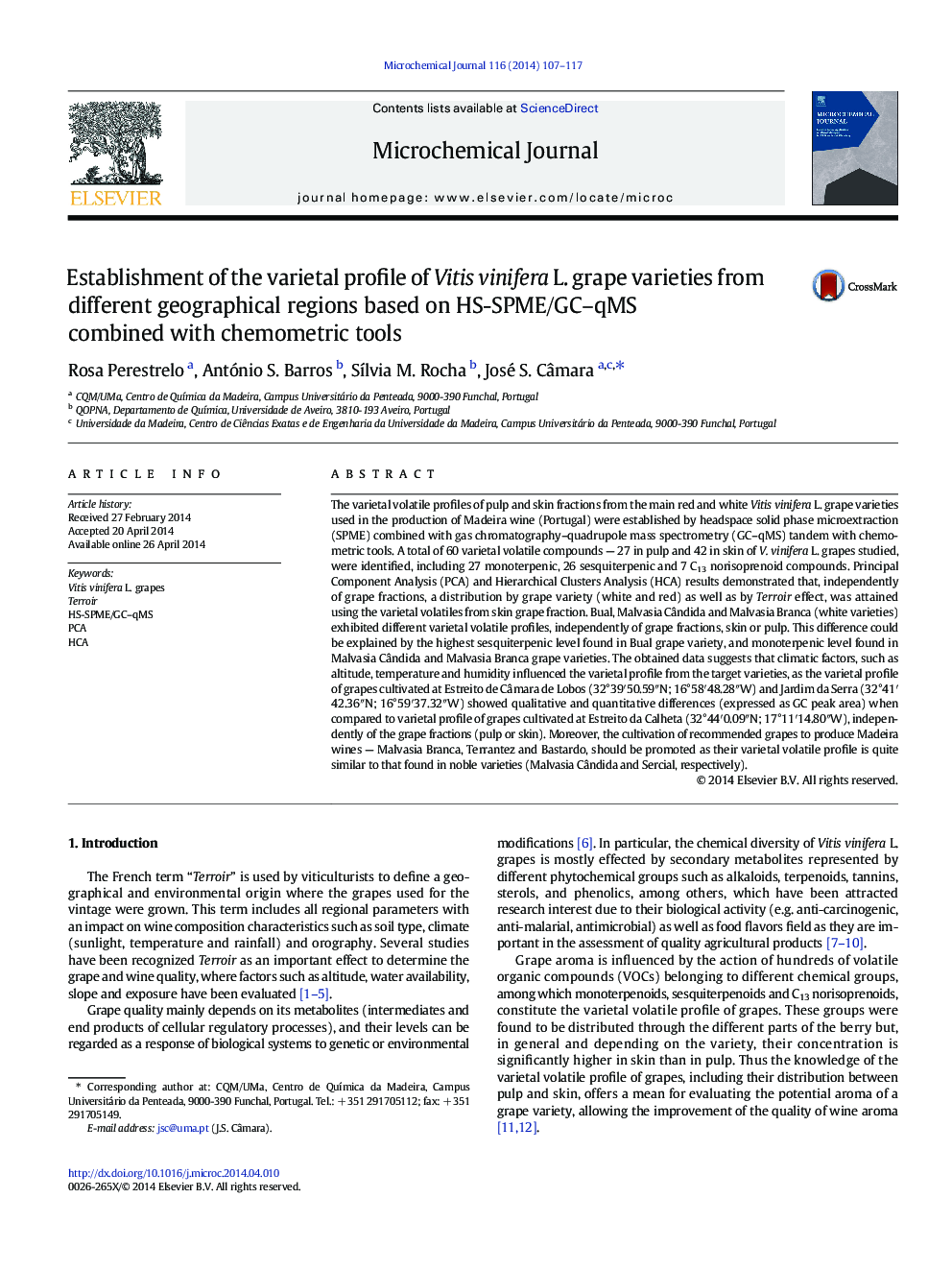| Article ID | Journal | Published Year | Pages | File Type |
|---|---|---|---|---|
| 7642929 | Microchemical Journal | 2014 | 11 Pages |
Abstract
The varietal volatile profiles of pulp and skin fractions from the main red and white Vitis vinifera L. grape varieties used in the production of Madeira wine (Portugal) were established by headspace solid phase microextraction (SPME) combined with gas chromatography-quadrupole mass spectrometry (GC-qMS) tandem with chemometric tools. A total of 60 varietal volatile compounds - 27 in pulp and 42 in skin of V. vinifera L. grapes studied, were identified, including 27 monoterpenic, 26 sesquiterpenic and 7 C13 norisoprenoid compounds. Principal Component Analysis (PCA) and Hierarchical Clusters Analysis (HCA) results demonstrated that, independently of grape fractions, a distribution by grape variety (white and red) as well as by Terroir effect, was attained using the varietal volatiles from skin grape fraction. Bual, Malvasia Cândida and Malvasia Branca (white varieties) exhibited different varietal volatile profiles, independently of grape fractions, skin or pulp. This difference could be explained by the highest sesquiterpenic level found in Bual grape variety, and monoterpenic level found in Malvasia Cândida and Malvasia Branca grape varieties. The obtained data suggests that climatic factors, such as altitude, temperature and humidity influenced the varietal profile from the target varieties, as the varietal profile of grapes cultivated at Estreito de Câmara de Lobos (32°39â²50.59â³N; 16°58â²48.28â³W) and Jardim da Serra (32°41â²42.36â³N; 16°59â²37.32â³W) showed qualitative and quantitative differences (expressed as GC peak area) when compared to varietal profile of grapes cultivated at Estreito da Calheta (32°44â²0.09â³N; 17°11â²14.80â³W), independently of the grape fractions (pulp or skin). Moreover, the cultivation of recommended grapes to produce Madeira wines - Malvasia Branca, Terrantez and Bastardo, should be promoted as their varietal volatile profile is quite similar to that found in noble varieties (Malvasia Cândida and Sercial, respectively).
Related Topics
Physical Sciences and Engineering
Chemistry
Analytical Chemistry
Authors
Rosa Perestrelo, António S. Barros, SÃlvia M. Rocha, José S. Câmara,
